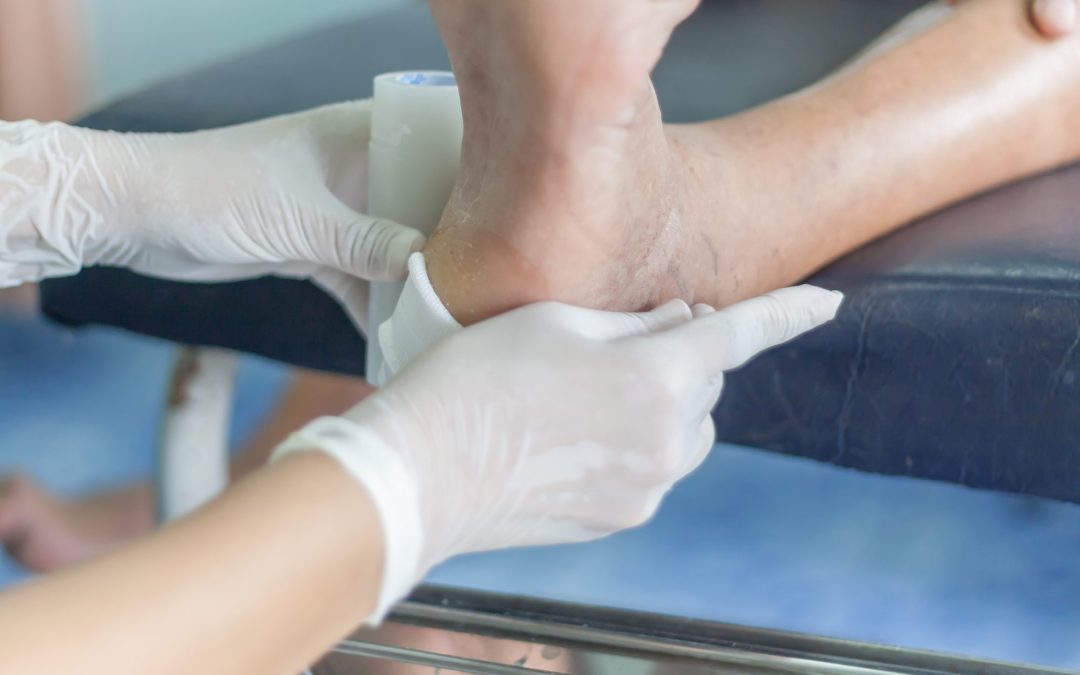Hospital administrators face a dual challenge in wound care: providing exceptional patient outcomes while maintaining financial viability. Revenue cycle management becomes particularly complex with wound care services due to varying payer requirements, detailed documentation standards, and evolving reimbursement models.
Successful hospitals recognize that proper reimbursement strategies can mean the difference between a profitable wound care program and a financial drain on hospital resources.
Understanding the intricacies of wound care reimbursement requires attention to multiple factors. Coding accuracy matters, of course, and documentation requirements vary. Payer-specific policies evolve over time, as can the compliance standards which must be met. Hospitals that master these elements position themselves for sustained financial success while delivering quality patient care.
Understanding Wound Care Reimbursement Models
Modern wound care reimbursement operates under several distinct models. Each has unique requirements and payment structures.
- Fee-for-service remains the most prevalent for wound care procedures, particularly in outpatient settings.
- Medicare Advantage plans often employ different reimbursement structures than traditional Medicare.
- Commercial payers frequently negotiate specific rates and may require prior authorization for certain treatments.
- Value-based care models, however, are increasingly common. These arrangements tie reimbursement to patient outcome, rather than the volume of services. They reward hospitals for achieving healing rates, reducing infection rates, and preventing readmissions.
- Bundled payment models group related wound care services under single payment amounts, which requires careful cost management to maintain profitability.
Understanding which model applies to each patient encounter allows hospitals to tailor their documentation and coding practices accordingly. This knowledge directly impacts revenue capture and helps administrators make informed decisions about resource allocation.
Documentation Requirements for Maximum Reimbursement
Proper documentation is the foundation of successful wound care reimbursement. Payers require detailed records that justify medical necessity, demonstrate appropriate care progression, and support the level of service provided. Missing or inadequate documentation will lead to claim denials and delayed payments.
Wound assessment documentation must include specific measurement, such as depth classifications, drainage characteristics, and surrounding tissue conditions. Photographs provide valuable supporting evidence, though hospitals must follow specific protocols for medical photography to meet payer requirements. Care plans should clearly outline treatment goals, expected outcomes, and rationale for selected interventions.
Provider notes must also demonstrate clinical decision-making processes and show how treatments align with evidence-based protocols. When treatments deviate from standard approaches, documentation should explain the medical reasoning behind these decisions. Regular progress notes help establish continuity of care and justify ongoing treatment necessity.
Coding Accuracy and Compliance
Accurate coding translates clinical care into the standardized language payers use for reimbursement decisions. Wound care involves complex coding scenarios that require specialized knowledge of ICD-10-CM diagnosis codes, CPT procedure codes, and HCPCS supply codes. Coding errors directly impact revenue and can trigger compliance issues.
Diagnosis coding must reflect the specific wound type, location, and severity, as well as any complications. Chronic wounds require different coding approaches than acute wounds. Diabetic ulcers need codes that capture both the wound and underlying diabetes. Pressure injuries must include staging information and anatomical location details.
Procedure coding varies based on the services provided, treatment complexity, and setting of care. For example, debridement procedures have specific requirements about tissue types removed and surface area treated, while advanced therapies such as negative pressure wound therapy require appropriate HCPCS codes and supporting documentation.
Because of the variety of dressings and products used, supply coding can present unique challenges in wound care. Hospitals must track supply usage accurately and match codes to actual products provided, while some supplies require specific documentation about medical necessity or frequency of use.
Regular coding audits help identify patterns of errors and compliance with payer requirements. A staff education program can address common coding mistakes and provide updates on guideline changes. Collaboration between clinical staff and coding professionals improves accuracy and reduces claim denials.
Managing Payer Requirements and Prior Authorizations
Simply put, different payers maintain distinct requirements for wound care services, which adds a layer of administrative complexity for hospital staff to handle. Medicare’s specific criteria for wound care visits, supply coverage, and treatment duration in one such example, and Medicaid programs vary by state and may have additional restrictions or requirements. But commercial payers often implement their own medical policies, too.
Getting prior authorization for wound care can feel like jumping through hoops, but understanding the process pays off. Many advanced wound treatments need approval before starting, and some insurers require periodic check-ins to continue treatments beyond certain timeframes. Knowing what to expect upfront prevents headaches and keeps payments flowing.
Authorization submissions need the full story. Payers want patient histories, documentation of previous treatment attempts, and clear rationale for the proposed intervention. Smart hospitals keep authorization templates and checklists handy for common requests because it streamlines the whole process.
Sometimes payers deny treatments that are clearly medically necessary. That’s when appeals become essential. A strong appeal doesn’t just repeat the original request—it adds more clinical details, backs up treatment decisions with solid research, and makes the medical necessity crystal clear. Tracking appeal outcomes reveals patterns that can improve initial authorization success rates.
Building Sustainable Financial Performance
Establishing key performance indicators allows hospitals to monitor their wound care reimbursement effectiveness and identify improvement opportunities. Important metrics include initial claim approval rates, average days in accounts receivable, denial rates by payer and service type, and appeal success rates.
Long-term success in wound care reimbursement requires strategic planning that aligns clinical programs with financial objectives. Hospitals should regularly evaluate their wound care service mix, payer contracts, and operational efficiency to identify improvement opportunities.
The financial success of wound care programs directly impacts a hospital’s ability to invest in advanced treatments, expand services, and maintain competitive staffing levels. Hospitals that master reimbursement improvement create sustainable programs that benefit both patients and the organization’s long-term financial health.
For hospitals seeking to reduce overall wound care expenses while improving reimbursement capture, explore our detailed guide on strategies for reducing wound care costs that complements these reimbursement improvement techniques.

Recent Comments